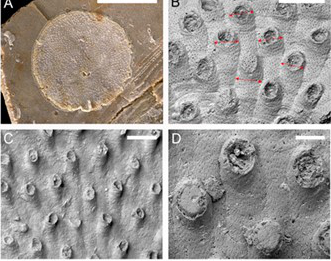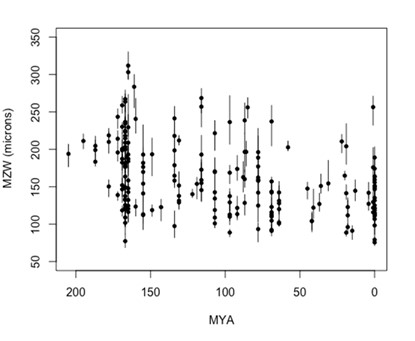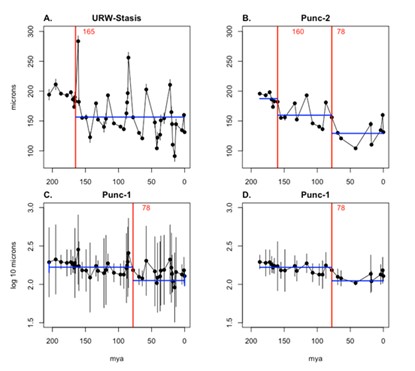Body size evolution has always been a core topic in paleontological research. "Cope's Rule" describes the trend of increasing body size during the evolution of many lineages. However, a recent study focusing on bryozoans, a particular modular organism, reveals a completely different evolutionary trajectory.A recent study reveals that "Berenicea", a group of cyclostome bryozoans, has continuously decreased in zooid size over the past 200 million years, showing an evolutionary trend opposite to "Cope's Rule". This research was completed through collaboration between MA Junye from the Nanjing Institute of Geology and Paleontology, Chinese Academy of Sciences (NIGPAS), Lee Hsiang Liow from the University of Oslo, Norway, and Paul D. Taylor from the Natural History Museum, London, UK, and was published in the international academic journal Palaeontology.
By measuring 200 samples of "Berenicea" morphotype bryozoans from the Late Triassic to the present, the research team discovered a significant decrease in the maximum zooid width over time. This trend contrasts sharply with the long-term stability of zooid size in cheilostome bryozoans, challenging the previous hypothesis that the two groups shared similar body size evolution patterns.
To investigate the causes, the researchers used multiple time-series models to test potential drivers such as changes in oxygen levels, the origination rate of cheilostome bryozoans, and their proportion within communities. The results show that although oxygen levels and zooid size show some statistical correlation, there is no causal relationship. Similarly, the rise of cheilostomes as a dominant group in spatial competition did not directly cause the zooid size reduction in "Berenicea".
Furthermore, the study ruled out the potential influence of changes in the (paleo-)latitude (temperature) of the samples on zooid size, further highlighting the intrinsic nature of this size reduction trend. Model analysis indicates that the zooid size reduction process was not constant, but showed two significant phased changes around 165 to 160 million years ago and around 78 million years ago.
This study is the first to systematically reveal the phenomenon of zooid size reduction in cyclostome bryozoans over macroevolutionary timescales. It proposes that this trend might be related to metabolic efficiency optimization or shifts in feeding ecological niches, rather than being a direct result of external environmental pressures or interspecific competition. This finding provides a new perspective for understanding body size evolution in modular organisms.
Reference: Ma, Junye; Liow, Lee Hsiang; Taylor, Paul D. (2025). Zooid size reduction in cyclostome bryozoans from the Late Triassic to the present-day. Palaeontology. https://doi.org/10.1111/pala.70027.

Fig.1 Cyclostome bryozoans of the ‘Berenicea’ morphotype.

Fig.2 Raw data of zooid width through time for 200 colonies of ‘Berenicea’.

Fig.3 The models that best fit ‘Berenicea’ zooid size data.
Download:
